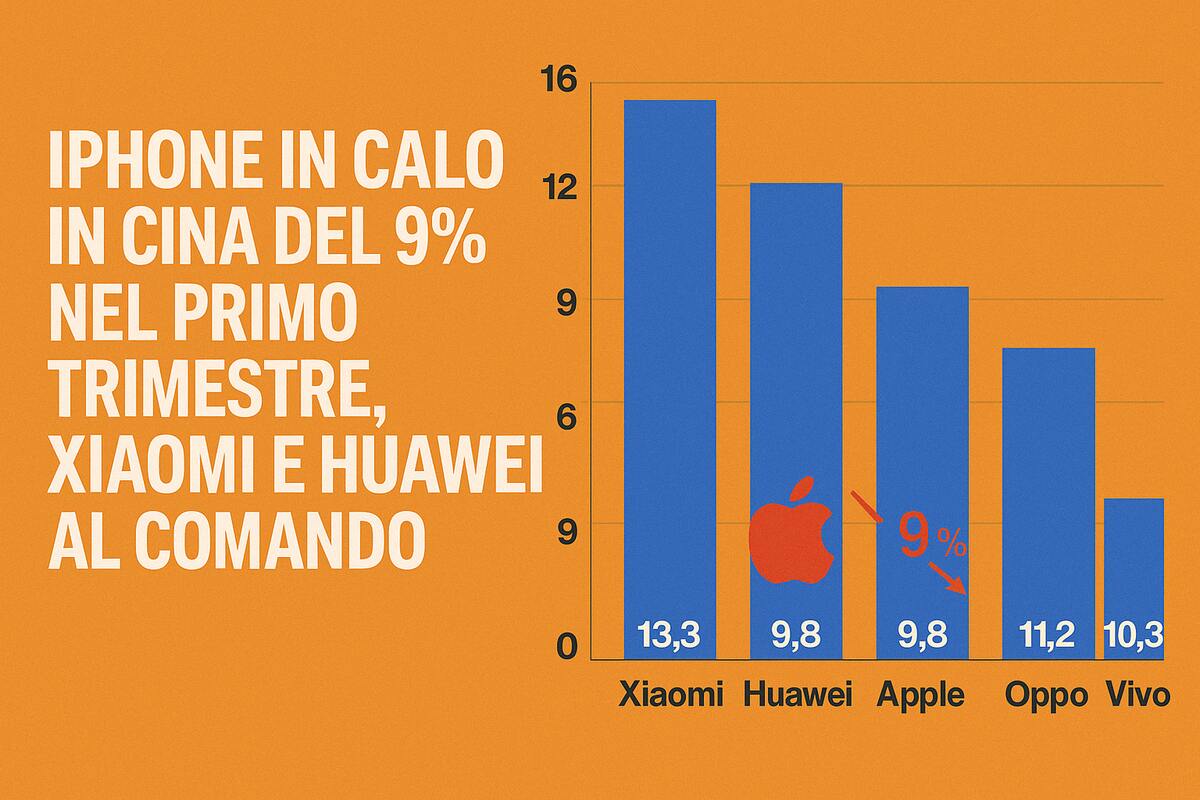WordPress Market Share, Statistics, and More
Think you haven’t used WordPress today? Think again. WordPress' market share shows it’s everywhere—and we’ve got the stats to back it up.

Unless you are deeply embedded in the WordPress community, you might not be aware of how big the platform really is. WordPress has had a dominant market share among CMSs for more than a decade and has been the most common way to build a website since 2021.
On any given day surfing the web, you are probably interacting with more WordPress websites than you realize. It’s the go-to platform for bloggers, businesses, creators, and major media outlets alike.
To help you understand the size of WordPress and its contribution to the modern web, this article explores the platform’s market share in detail, as well as its versatility, reasons for success, and what keeps it ahead of the curve two decades after it launched.
Quick facts
Here are the most important WordPress stats you should know:
- WordPress is the most popular software for building websites, powering over 43% of the internet.
- It commands a 61.4% market share among content management system-based websites (also known as CMSs), more than all other platforms combined.
- WordPress’ market share has more than doubled in the last decade.
- To date, WordPress has had 52 major releases and more than 760 releases in total.
- There are tens of thousands of WordPress themes and over 65,000 plugins.
- 1/3 of all online shops run on WordPress-powered WooCommerce.
Over 43% of all websites use WordPress
As of April 17, 2025, 43.4% of the websites on the internet run on WordPress, according to W3Techs. That means almost every other website runs on WordPress, and it makes WordPress the most widely used website builder in the world.
This is even more impressive when you consider that the next runner-up, Shopify, has a market share of 4.8%, followed by Wix (3.7%), Squarespace (2.3%), Joomla (1.5%), and Drupal (0.8%).
At 29.1%, websites without a CMS are the only segment that even comes close to WordPress’ share.

What’s also remarkable is that almost 20 years ago, the market share of WordPress was only 0.8%, according to Building Blocks: The Evolution of WordPress.
There may be more than half a billion WordPress websites
Knowing that nearly every other website runs on WordPress is impressive, but how many is that in total? The answer to that isn’t completely straightforward, as it depends on your source and perspective.
For example, BuiltWith, a popular tracking tool for the usage of different internet technologies, only considers about 70 million websites as its relevant sampling pool as of April 3, 2025. In that case, we are talking about roughly 30 million WordPress websites worldwide.

The aforementioned W3Techs states that their measurements are based on “the relevant web,” meaning sites with useful content and functionality. They don’t provide an exact number, just that it’s “many millions.”
On the other hand, NetCraft, a digital risk protection company, publishes a monthly report in which it keeps track of sites available on the web. According to their March 2025 report, there were close to 1.2 billion websites in total (1,197,680,522 to be exact).

If we apply WordPress’ market share to that number, that means over 518,000,000 websites are powered by the platform. Mind-blowing, right?
Since reporting on the exact number of websites in existence is impossible, we can at least say that there are at least tens of millions, if not hundreds of millions, of WordPress websites in existence.
That is quite awe-inspiring for free, open source software.
Popular websites using WordPress
Besides the raw numbers, WordPress is the software of choice for a diverse range of brands, organizations, celebrities, and very different types of websites.
The news outlet that gives us the annual “Person of the Year” runs its high-traffic online presence on WordPress.com VIP.
The world’s leading CRM company uses WordPress to power parts of its web ecosystem.
One of the most prestigious universities in the world relies on WordPress to publish news and research as well as inform and attract students to their campus.
Swifties can find tour dates, merch, and news about their favorite pop star thanks to WordPress.
61.3% of websites that use a CMS rely on WordPress
If you look only at the websites that use a content management system, WordPress’ market share is even higher, at 61.3%—meaning it has more users than all other CMS platforms combined.

WordPress doubled its market share in 10 years
It’s also important to understand how WordPress arrived at the position it’s in today. W3Techs has statistics reaching back to 2014 that allow you to do so.
At just 21%, WordPress’ market share was only half of what it is today. In addition, at that time, hand-coding websites was still popular—64.8% of sites didn’t use a CMS at all. But in the last 20+ years, those numbers have steadily approached each other until they changed positions in 2021.

During that time, the share of CMS-based websites increased from 35.2% to 70.8%, and it’s safe to say that WordPress played a major role in this transformation.
In that timeframe, the nearest competitors, Shopify, Wix, and Squarespace, grew as well, though not in the same way. They all started at 0.1% market share in 2014 and increased their numbers to 4.8%, 3.7%, and 2.3%, respectively.
Joomla and Drupal, the two systems most similar to WordPress (both are also open source and PHP-based), went in the other direction. They about halved their market share, going from 3.3% to 1.5% and 1.9% to 0.8%.
WordPress is popular around the world
The popularity of WordPress differs both geographically and by language. According to BuiltWith, the countries with the most WordPress websites are:
- United States
- Germany
- United Kingdom
- France
- Brazil
- Netherlands
- Italy
- India
- Spain
- Japan
While these stats are based on total websites, it’s often a different picture by share.
For example, as mentioned in the State of the Word 2024, in Japan WordPress powers 58.5% of all websites and has a CMS market share of 83%, much more than the average.
Plus, if you look at Google Trends data, you can see that interest in WordPress is highest in Pakistan, China, Bangladesh, Bosnia & Herzegovina, and Kenya.

That diversity extends to the many languages WordPress is used in.
Initially only available in English, WordPress has since been translated into 208 locales. In fact, there are now more non-English WordPress installations than those in English.

There have been 52 major WordPress releases, over 760 overall
Since 2003, WordPress has had 52 major releases—the latest being this week! All are named in honor of jazz musicians, starting with Miles Davis in version 1.0.

Major releases are the ones that get the most attention because they bring new features and noticeable changes, such as the block editor in WordPress 5.0. If you include releases for security improvements and bug fixes, the WordPress software has had over 760 releases.
Most popular versions of WordPress
Keeping your WordPress website up to date is an important security measure. A look at the stats on WordPress.org suggests that users are doing a good job at that.
As of April 17, 2025, nearly 3.6% of all WordPress websites are using the latest version, 6.8. Over 66% are using the previous version 6.7.

The situation is slightly different when it comes to PHP. While more than half of websites use version 8 or above, there’s still a good chunk running 7.4 and even below that.

Most surprising are the database versions. While MySQL used to reign supreme, it has serious competition from MariaDB. Usage of the two systems is pretty much split.

If your WordPress site is hosted on WordPress.com, you can breathe easy; your WordPress, PHP, and database versions are kept up to date for you on all WordPress.com plans.
There are tens of thousands of WordPress themes
The WordPress.org theme directory contains more than 13,000 themes. ThemeForest, a popular marketplace for third-party WordPress themes, has another 12,000. Many more third-party vendors also distribute their own free and paid themes. And if you host your website on WordPress.com, you also have access to additional exclusive themes.

Because of the spread-out nature of the WordPress ecosystem, it’s hard to know exactly how many themes there are altogether, but that’s the beauty of open source—anyone, anywhere, can make a WordPress theme.
Most popular WordPress themes
Which WordPress themes do users most like to power their sites with? According to BuiltWith, some of the most popular WordPress themes are:
Note that this data only makes up about 25% of the websites they’re tracking—three-quarters are using an assortment of other themes.
The WordPress.org theme directory shows a similar trend; here, the themes with more than one million active installations are:
Tens of thousands of WordPress plugins
There are 59,000+ free WordPress plugins in the WordPress.org directory.
As with themes, there are lots of additional independent vendors, making it hard to understand just how many WordPress plugins are available.
On the WordPress.org directory, these are the plugins that are installed most often:
- Elementor: 10+ million installations
- Contact Form 7: 10+ million installations
- Yoast SEO: 10+ million installations
- Classic Editor: 10+ million installations
- WooCommerce: 8+ million installations
- LiteSpeed Cache: 6+ million installations
- Akismet: 6+ million installations
- WPForms: 6+ million installations
- All-in-One WP Migration: 5+ million installations
- Wordfence Security: 5+ million installations
One-third of all online shops run on WooCommerce
WooCommerce is the most-used WordPress ecommerce plugin; W3Techs shows it has been added to one-fifth of all WordPress websites.
WordPress’ market share makes it the most widely used online shop solution overall. This is seconded by a Store Leads report from March 2025 that tracked 13,594,414 live stores. WooCommerce powers about a third of those stores, meaning WordPress not only dominates the content management market but also ecommerce.

What makes WordPress so successful?
WordPress didn’t become the world’s most popular website platform by accident. Here’s what makes it an enduring crowd favorite:
- Open source: Made by a large community all around the world, WordPress is freely available for anyone to use for any purpose.
- Cost effectiveness: Its lack of licensing fees means you only have to pay for hosting and a domain to have your own website online. You can customize the site yourself and use free themes and plugins.
- User friendliness: The WordPress dashboard and editor enable beginners and experts alike to make design changes and create and manage content.
- Flexibility: You can use WordPress to build almost any type of website, like blogs, online stores, portfolios, news sites, and forums.
- Ownership: You have full control over your content, files, and data, and you can take your site to any other host.
- Theme and plugin ecosystem: Tens of thousands of themes and plugins are available for every purpose, many of them for free.
- Scalability: WordPress is capable of supporting everything from small personal sites to high-traffic enterprise platforms.
- SEO friendliness: Clean code, customizable permalinks, and powerful plugins make it easy to optimize your site for search engines.
- Community: There is a global network of businesses, developers, users, and contributors offering support, creating resources, and getting together at WordCamps. With WordPress, you are never alone.
Will WordPress retain its leading position?
It took 20+ years to achieve the success WordPress has had. Here are a few factors that suggest it will continue thriving in the future:
- AI usage: As AI tools become more powerful and accessible, they become increasingly available in WordPress for things like content suggestions, image generation, SEO optimization, and even building entire websites—have you tried our free AI website builder yet?
- Performance enhancements: WordPress is taking targeted steps to improve website speed across the board, not least with the establishment of the Core Performance team. Hosting providers like WordPress.com also offer WordPress-specific speed improvements out of the box.
- Collaborative features: One anticipated feature coming to later WordPress versions is the implementation of real-time collaboration to allow teams to work on web pages and blog posts simultaneously. Publishing workflows and editorial tools like commenting are part of the plan.
- Multilingual support: After real-time collaboration, one of the next planned WordPress improvements is to integrate native multi-language support. This will make it easier to translate your website and help it thrive in a global market.
- Headless WordPress: Decoupling content management from the front end allows developers to build user interfaces with frameworks like React or Vue—this is called Headless WordPress. This makes WordPress a strong choice for sites like SaaS platforms and mobile apps and helps it stay competitive in an API-first web ecosystem.
WordPress’ market share isn’t just a number—it’s proof of the power of open source
WordPress isn’t just the most popular way to build websites; the software shaped the modern web as we know it.
From humble beginnings as a blogging tool to powering more than 43% of the internet, it’s become the go-to solution for creators, developers, and organizations across the globe.
The real story isn’t just how many websites WordPress powers—it’s who’s using it, what they’re building, and why that number keeps growing after two decades. If you’ve used the internet today, you’ve probably interacted with WordPress, proving that open-source, community-driven software can not only lead the way but set the standard.
Are you looking to join the 43%? Get hosting, security, backups, speed optimization, support, and unlimited site visitors for your WordPress site at WordPress.com.


























































